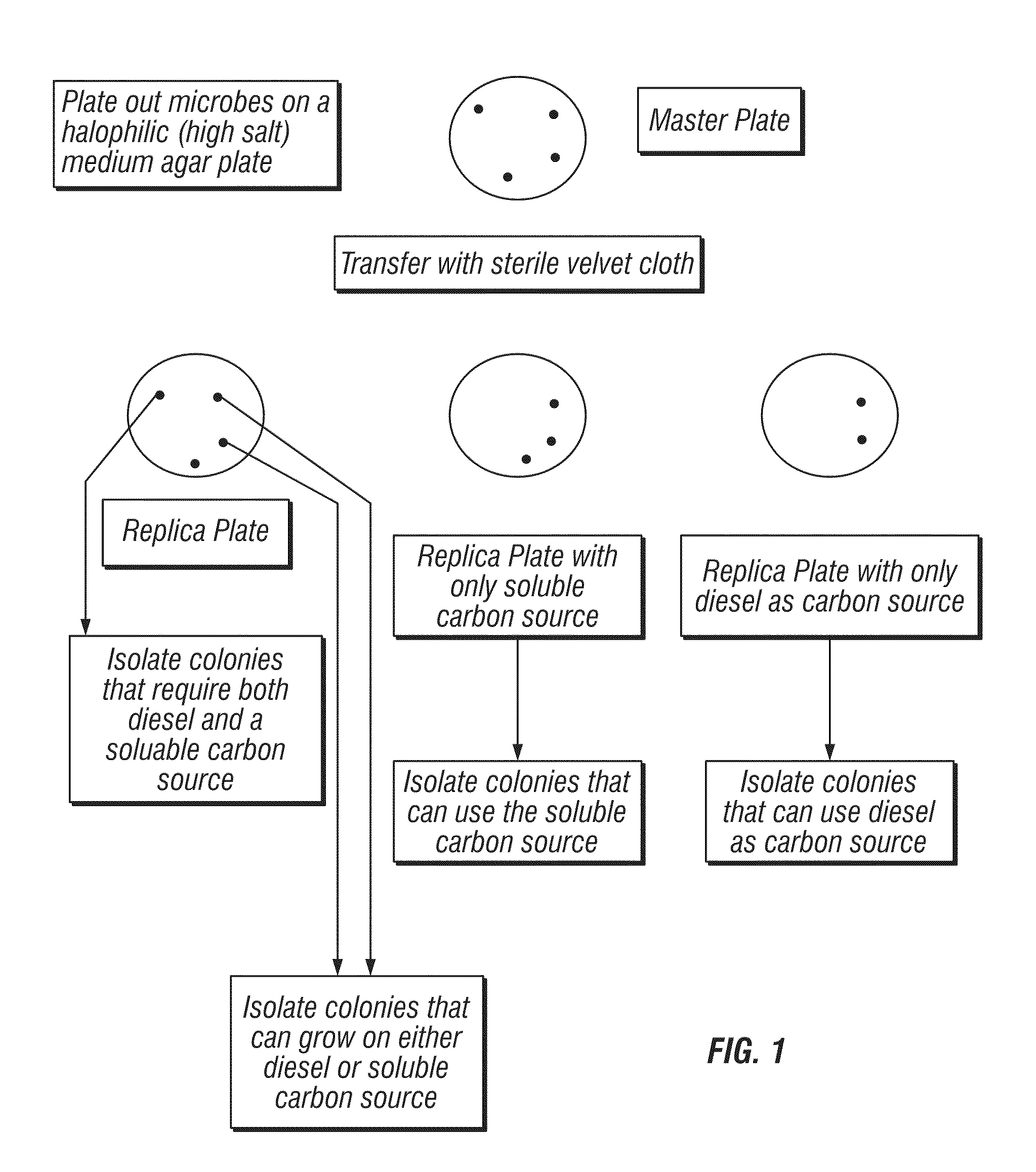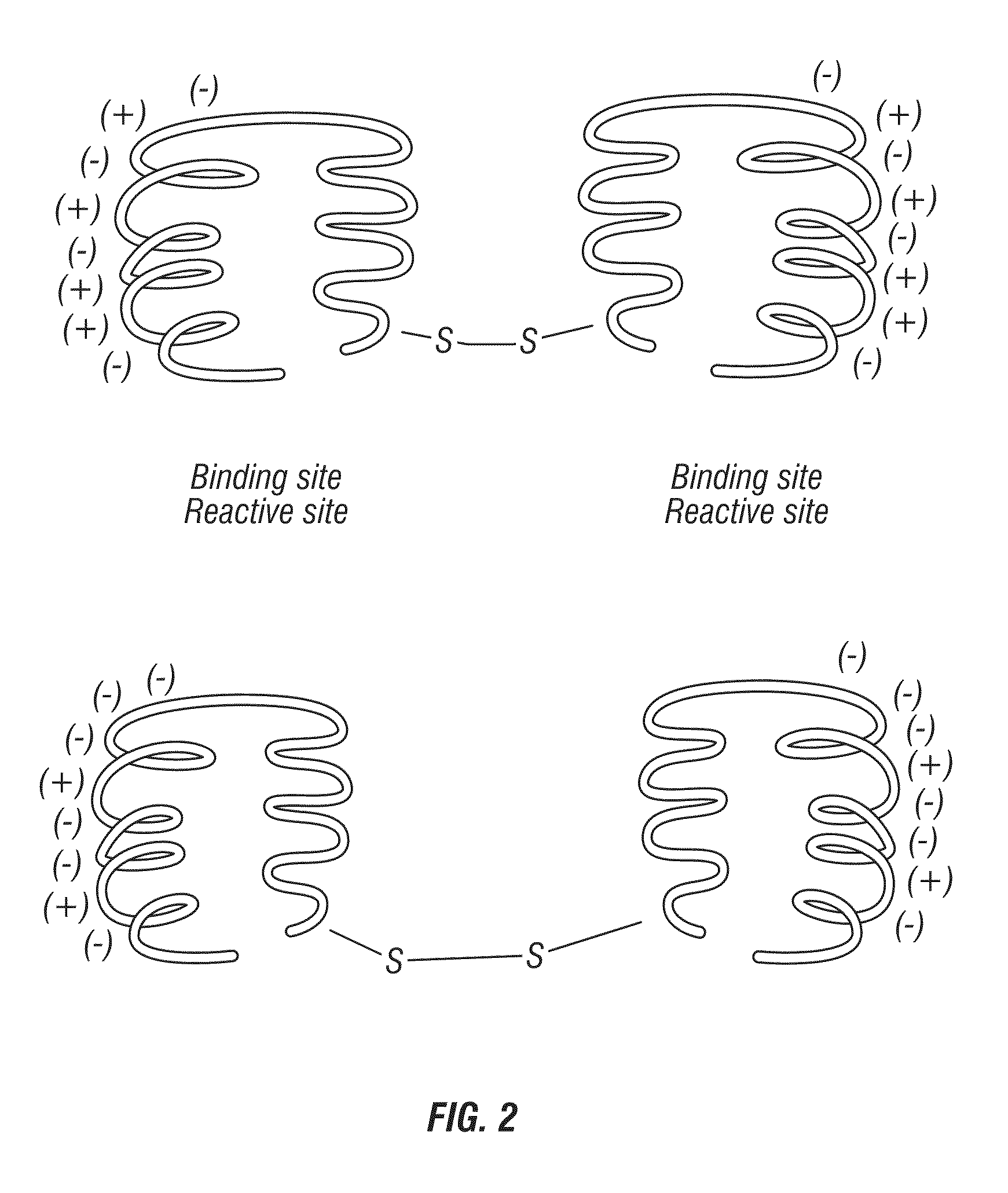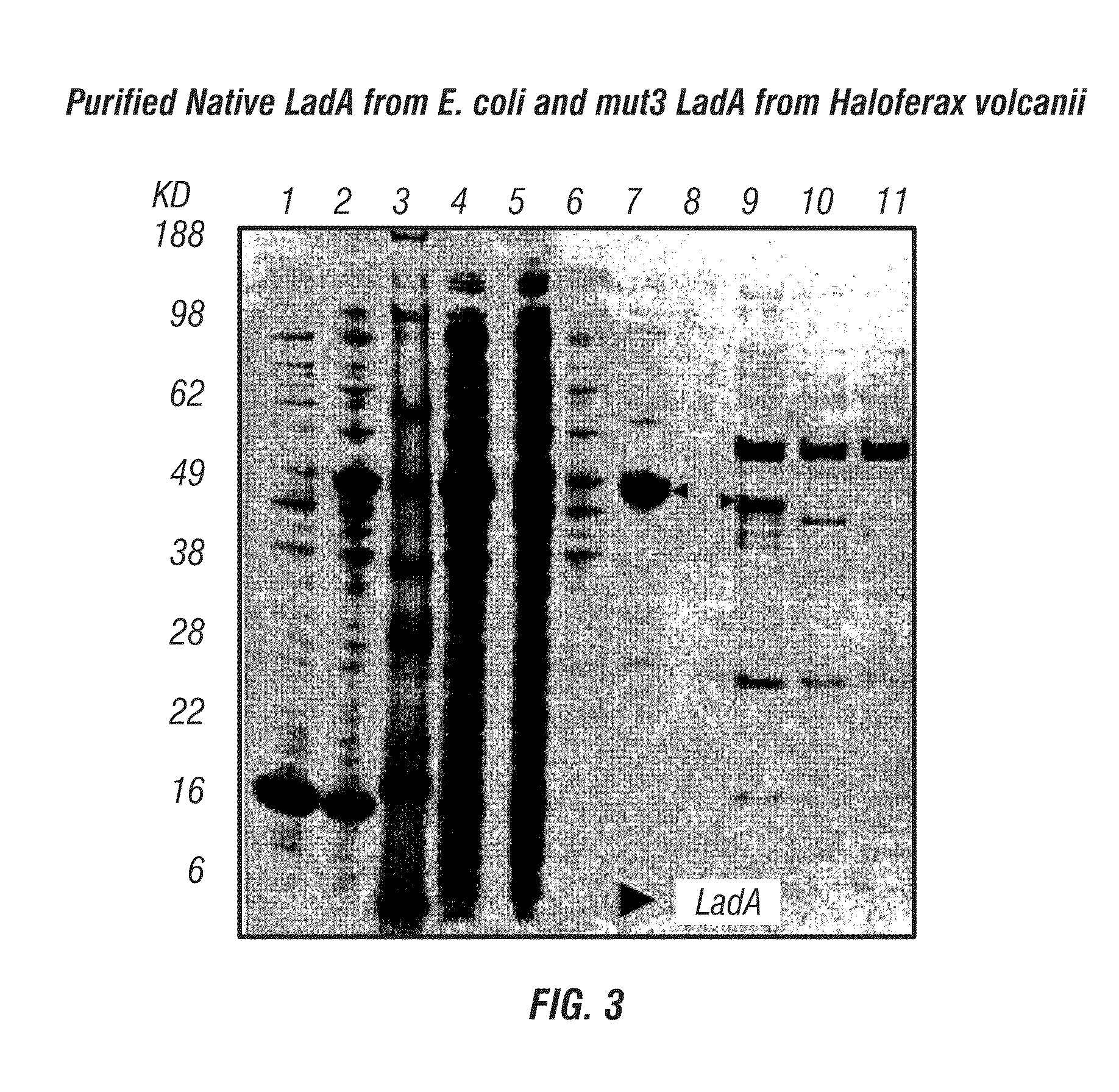Microbial enhanced oil recovery methods
a technology of enhanced oil and microorganisms, applied in the field of microbial enhanced oil recovery, can solve the problems of increasing the demand for imported oil, a large amount of energy for heavy oil production, and a large dependence on foreign suppliers, and achieve the effect of suppressing the consumption of the lighter fraction of petroleum and enhancing the recovery of petroleum oil
- Summary
- Abstract
- Description
- Claims
- Application Information
AI Technical Summary
Benefits of technology
Problems solved by technology
Method used
Image
Examples
example 1
Step 1: Microbe Isolation, Characterization and Improvements Site Selection
[0177]Environments of consistently high salt concentrations (salinities exceeding 100,000 ppm total dissolved solids) are best for isolation of obligate halophiles. Sites also containing liquid hydrocarbons such as petroleum oil fields or waste oil / brine disposal pits are good candidates for microbes that are both halophiles and also have the ability to metabolize various types of hydrocarbons. Microbes selected for use in MEOR should be able to function in a low oxygen environment. Facultative anaerobes are ideal host microorganisms. Especially good are microbes that can use nitrate as an election acceptor. Aerobic microbes may be used in applications where large amounts of air can be injected with the waterflood fluid. Microbes isolated from these environments can also be a source of genes and gene sequence information that can be used to genetically modify a culture of microbes, which can be tested and use...
example 2
[0194]In this example essentially the same procedure described in Example 1 is used to isolate halophiles that are able to grow in brine solution in an environment similar to an underground petroleum reservoir to isolate a strain that is able to utilize petroleum compounds of various types. If the strain of halophile isolated is capable of metabolizing both short and long chain alkanes, the gene for metabolizing short chain hydrocarbons is knocked out while maintaining the genes for longer chain alkanes. The ideal location for isolation of such halophiles is a petroleum reservoir with a brine solution of over 100,000 ppm of total dissolved solids. In addition the temperature should not be more than 80° C. so that the brine taken from the reservoir is likely to contain microorganisms.
[0195]There are a number of species of microbes that have been reported that only degrade high molecular weight oil. For example, Banerjee et al. in U.S. Pat. No. 5,013,654, isolated a strain of Pseudomo...
example 3
[0211]In this example microbes are isolated for their ability to produce extracellular polymers in a high salt environment with little or no ability to consume light weight hydrocarbons. One of the most important factors for waterflood is sweep efficiency. Permeability variation and fractures will cause high flow of fluid through some areas and little or no flow in other areas. Polymers are useful in oil recovery because they can block the flow of fluid through the low resistance channels. They also thicken the water to make a better fluid to drive the oil out of the reservoir. Both bio-polymers and chemical polymers can be used for this purpose. Most chemical polymers are less effective at high salinity. Bio-polymers, especially those produced by microbes, which live in high salinity environments, are more useful for oil recovery from high salinity reservoirs. Bio-polymers are variable in their viscosity in high salinity brine. Pfiffner et al. reported in Appl. Environ. Microbiol. ...
PUM
| Property | Measurement | Unit |
|---|---|---|
| pH | aaaaa | aaaaa |
| pH | aaaaa | aaaaa |
| temperatures | aaaaa | aaaaa |
Abstract
Description
Claims
Application Information
 Login to View More
Login to View More - R&D
- Intellectual Property
- Life Sciences
- Materials
- Tech Scout
- Unparalleled Data Quality
- Higher Quality Content
- 60% Fewer Hallucinations
Browse by: Latest US Patents, China's latest patents, Technical Efficacy Thesaurus, Application Domain, Technology Topic, Popular Technical Reports.
© 2025 PatSnap. All rights reserved.Legal|Privacy policy|Modern Slavery Act Transparency Statement|Sitemap|About US| Contact US: help@patsnap.com



